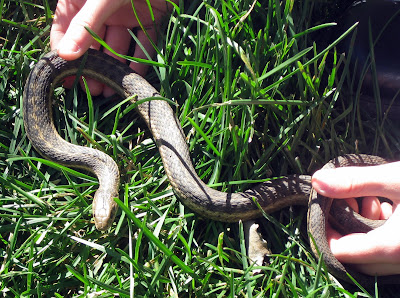(CLICK ON THE PICTURES FOR CLARITY)

The best-looking milk snakes just aren't as pretty as pyros are. Even the beloved scarlet kingsnake is not painted quite as brilliantly as these mountain kings.

The amount of black and the triad (3 colors repeated) count varies greatly with pyros. One thing that is consistent is the red in pyros. Unlike the red in milk snakes, which varies greatly, the red in pyros is almost always the same, even in the albinos. The red in pyros comes as close to orange as possible without actually being orange.

Living in mountains that are covered with snow for a large part of the year and possessing such coloration, pyros really are a freak of nature.

This is a captive bred pyro that has some staggered triads or "zipper".

The coolest pyros available from 12 different locations can found at http://www.ophidiarium.com/

Great natural camouflage:

Mexican mountain kings are a pyromelana subspecies labeled knoblochi. They typically have nearly twice the triads as Arizona mountain kings and also the white bands connect at the bottom in a chain-link pattern. They are just a different kind of awesome and are just as available in the pet trade as pyros are. This is my captive bred knoblochi:
Stumbling upon a knoblochi or pyro is about the height of field herping, but take only photos.

If your snake collection consists of only one snake and that snake is a pyro, your collection is still complete.




